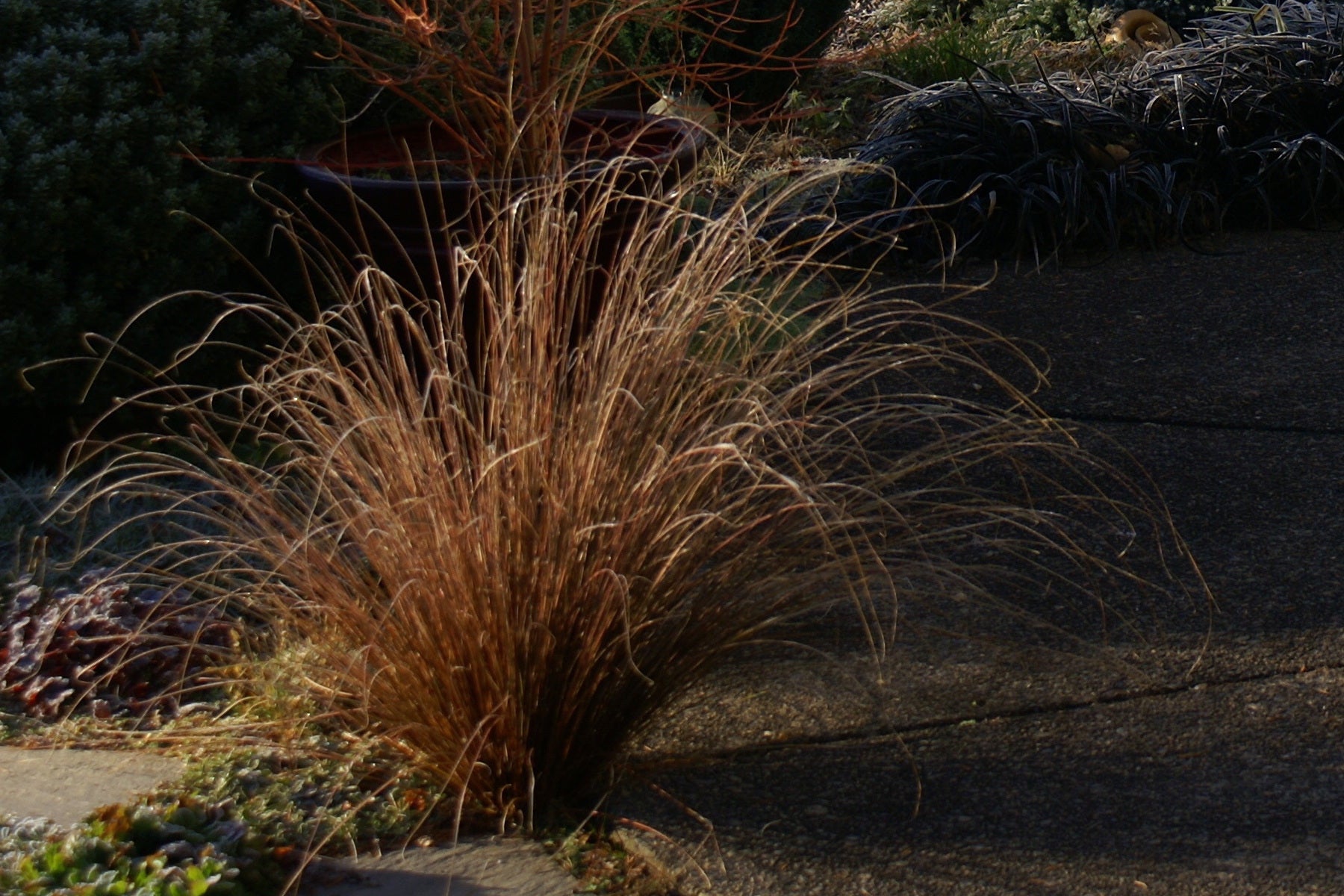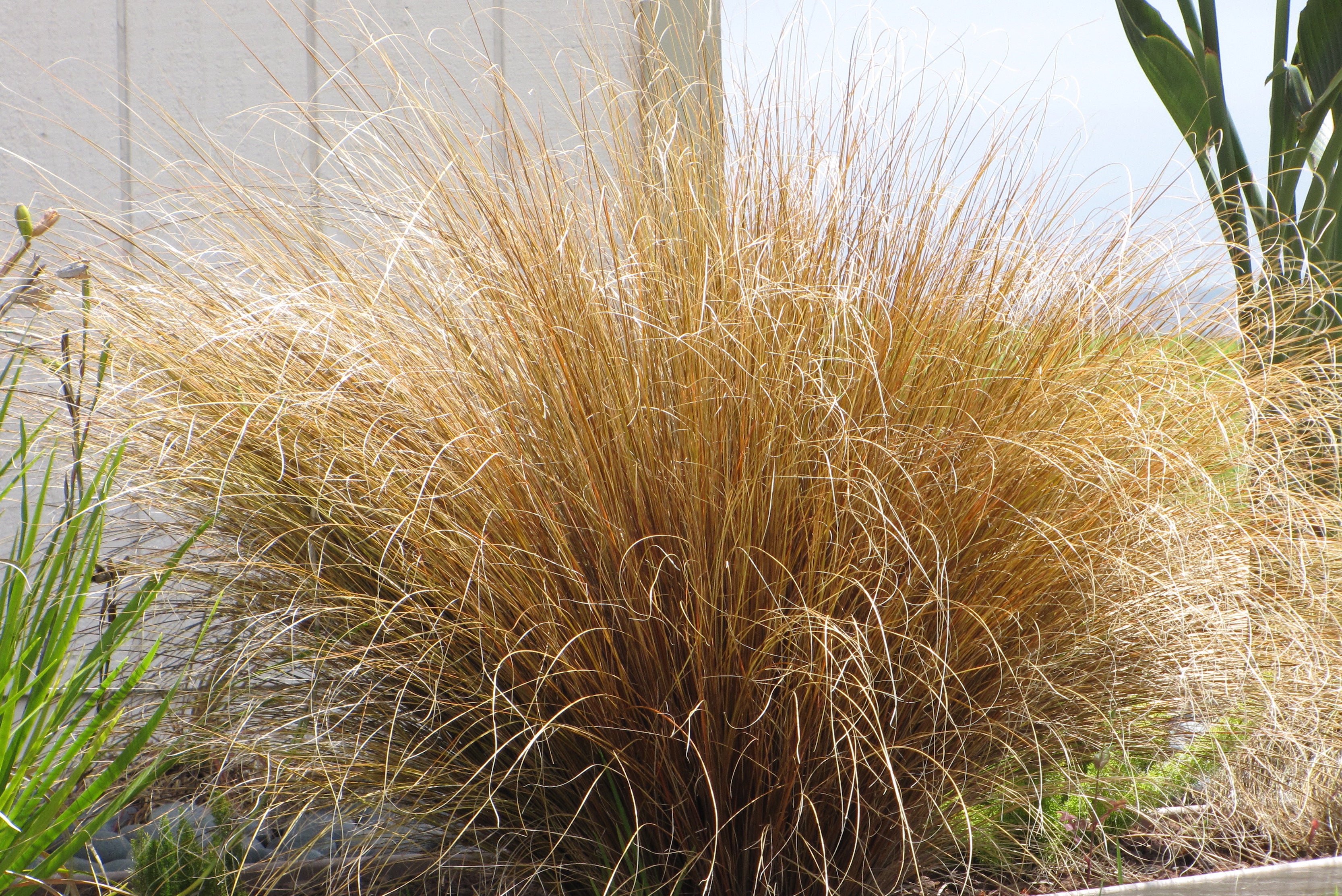Carex buchananii
Approx. 0.5 litre pot
About this cultivar:
Carex buchananii is a perennial evergreen sedge that is native to New Zealand. Narrow, fine, upright, grass-like, copper-bronze to cinnamon-brown leaves arching slightly at the tips. Unisexual flowers appear in summer, but the flowers are ornamentally insignificant (small, green and lacking petals or sepals) and often sparse.
It has a great habit, the leaves catch the breeze in attractive ways. Versatile, try in combos, own its own, even a feature plant in a pot. Carex like wet but you can also try this in dry areas, alpine gardens, nooks and crannies.
Commonly known as leatherleaf sedge, the species name honours John Buchanan (13 October 1819-1898) who was a Scottish born New Zealand botanist, scientific artist and fellow of the Linnean Society.!
- Position: Full sun, partial shade
- Soil: Almost any soil, grows well in Ballyrobert
- Flowers: April, May, June, July, August
- Other features: Grows well in Ballyrobert
- Hardiness: H5 - Hardy in most places throughout the UK even in severe winters (-15 to -10°C), Fully hardy - grows well in Ballyrobert!
- Habit: Tufted, Clump forming
- Foliage: Evergreen
- Height: 30 - 60 cm (1 - 2 ft)
- Spread: 15 - 45 cm (0.5 - 1.5 ft)
- Time to full growth: 2 to 5 years
- Plant type: Herbaceous Perennial
- Colour: Yellow, green, red
-
Goes well with: Phlox, Arum and Helleborus. Or Hosta, Begonia and Tricyrtis.
About this genus:
Carex was established as a genus by Carl Linnaeus in his work Species Plantarum in 1753. It is a vast genus of almost 2,000 species of grassy looking plants in the family Cyperaceae, commonly known as sedges. Other members of the Cyperaceae family are also called sedges, however those of genus Carex may be called "true" sedges, and it is the most species-rich genus in the family. The genus is so vast that the study of Carex has its own name: caricology. There are some great stories about this genus, for instance: a mix of dried specimens of Carex have a history of being used as thermal insulation in footwear (such as skaller used by Sami people). During the first human expedition to the South Pole in 1911, mixes were used!
Carex foliage colour varies from green, to blue, to gold/orange or variegated. The genus generally forms arching mounds from a few inches to more than 2 feet tall. Carex looks like a grass, is often called a grass, but it is NOT a grass! It is a sedge! Solid triangular stems distinguish sedges, including the species herein, from grasses which have round and usually hollow stems. In the wild they are often found in wetlands, hence it is unsurprising they prefer moist soil and part shade. However, like most plants in our garden, they grow in most conditions that are not too extreme: they are tough!
Sedges are used mostly as evergreen shade "ornamental grasses" that add dramatic form and blend texturally with most plants. But don't just think of them as "Grasses for shade" they also compliment Liriope and Ophiopogon. Because they like moisture, at Ballyrobert, we often plant them in and around Astilbe, Hosta and Primula where their colourful foliage combines with the flowers of the other plants! (I love red Astilbe with yellow Carex)




